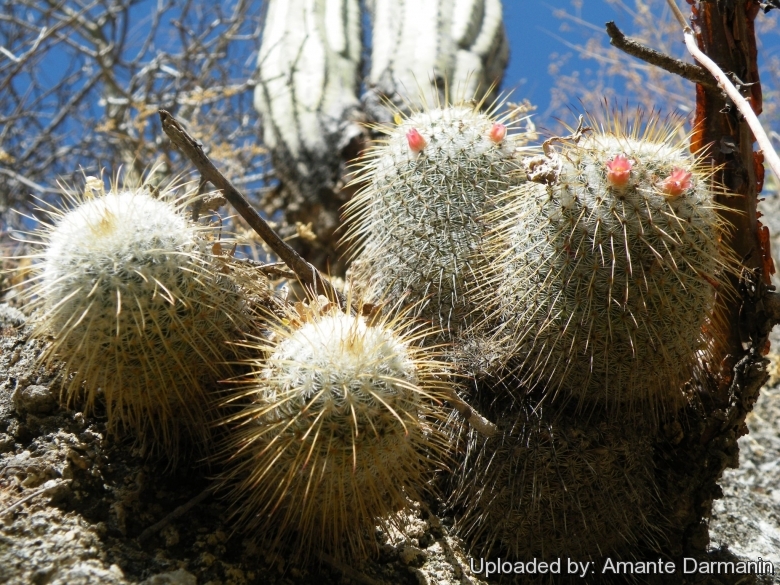
Mammillaria dixanthocentron Photo by: Amante Darmanin
In habitat Near San Juan De Los Cues, Oaxaca, Mexico.
Origin and Habitat: Northwestern Oaxaca and southern Puebla, Mexico. (Mexico Southwest, Mexico, Northern America)
Altitude: 500-2500 metres above sea level.
Habitat: Mammillaria dixanthocentronSN|30214]]SN|19098]] occours in dry tropical deciduous forest and Quercus-Pinus forest and is a facoltative saxicole that can be found either clinging on cliffs and steep rocky slopes and limestone walls and also on hills and on the shadier side, under the trees; the soil is alkaline (pH 7-8). This rocky habitats harbour a rich succulent flora comprising: Pilosocereus chrysacanthusSN|6677]]SN|6677]], Mammillaria carneaSN|23756]]SN|23756]], Mammillaria tonalensisSN|19098]]SN|30214]], Ritterocereus pruinosusSN|7952]]SN|7952]], Coryphantha calipensisSN|10082]]SN|10082]], Ferocactus recurvusSN|4280]]SN|4280]], Neobuxbaumia tetetzoSN|6411]]SN|6411]], Cephalocereus hoppenstedtiiSN|6711]]SN|6711]], Myrtillocactus geometrizansSN|8050]]SN|8050]], Stenocereus stellatusSN|7951]]SN|7945]], Stenocereus pruinosusSN|7945]]SN|7951]], Opuntia decumbens, Pachycereus weberiSN|7437]]SN|7669]], Pachycereus hollianusSN|7669]]SN|7437]], Plumeria rubraSN|19640]]SN|19640]], Ipomoea arborescens, Bursera morelensis, Jatropha spathulata, Jatropha urens, Agave marmorataSN|516]]SN|519]], and Agave macroacanthaSN|519]]SN|516]]. The species is locally very abundant. It is known from at least 21 sites, where a total population of about 350,000 mature individuals is reported.
Synonyms:
See all synonyms of Mammillaria dixanthocentron
back
Accepted name in llifle Database:Mammillaria dixanthocentron Backeb.Descr. Cact. Nov. 3: 8. 1963 nom. inval. type collection not preserved [validated by Mottram Mammill. Index 24 (1980)]Synonymy: 2
Accepted name in llifle Database:Mammillaria dixanthocentron subs. flavicentra (Backeb. ex Mottram) U.GuzmánCactaceae Syst. Init. 16: 18 (11 Oct. 2003). Remarks: first published in U.Guzmán et al., Catálogo Cact. Mex.: 123 (May 2003), without basionym referenceSynonymy: 3
back
Common Names include:
UKRAINIAN (Українська): Мамілярія диксантоцетрон
Description: Mammillaria dixanthocentronSN|19098]]SN|19098]] is a robust cylindrical cactus species, up to 30 cm high. with two long, yellow, central spines. This Mammillaria with its lovely spination makes a wonderful feature plant.
Habit: Plants mostly solitary unbranched or occasionally forking dichotomously at maturity.
Stems: Stout, globose to short cylindrical to 20(-30) cm high, 7-8 cm in diameter.
Tubercles: Cylindrical. Without latex. Tubercles-axil with scant wool at first, later with curly wool.
Radial spine: 19-20, thin, white, 2-4 mm long.
Central spine: 2-4, usually yellow, but also white to reddish, becoming brownish or whitish, with dark tips, upper central spine to 5 mm long, lower one up to15 mm long.
Flower: Small, 8-10 cm long and in diameter, light red to pale pinkish red.
Fruit: Yellow below, orange above.
Seed: Brown.
Subspecies, varieties, forms and cultivars of plants belonging to the Mammillaria dixanthocentron group
Bibliography: 1) Edward Anderson “The Cactus family” Timber Press, Incorporated, 2001
2) James Cullen, Sabina G. Knees, H. Suzanne Cubey "The European Garden Flora Flowering Plants: A Manual for the Identification of Plants Cultivated in Europe, Both Out-of-Doors and Under Glass" Cambridge University Press, 11/Aug/2011
3) David R Hunt; Nigel P Taylor; Graham Charles; International Cactaceae Systematics Group. "The New Cactus Lexicon" dh books, 2006
4) John Pilbeam “Mammillaria: the cactus file handbook” Cirio Publishing Services Ltd Dec/30,/1999
5) Arias, S., Valverde, T. & Zavala-Hurtado, A. 2013. Mammillaria dixanthocentron. In: IUCN 2013. IUCN Red List of Threatened Species. Version 2013.1. <www.iucnredlist.org>. Downloaded on 13 August 2013.
 Mammillaria dixanthocentron Photo by: Julio C. García
Mammillaria dixanthocentron Photo by: Julio C. García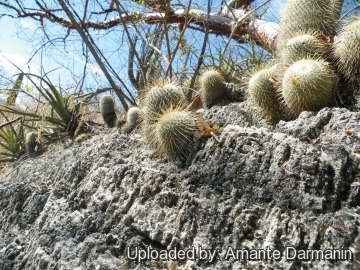 Mammillaria dixanthocentron, Near San Juan De Los Cues, Oaxaca Photo by: Amante Darmanin
Mammillaria dixanthocentron, Near San Juan De Los Cues, Oaxaca Photo by: Amante Darmanin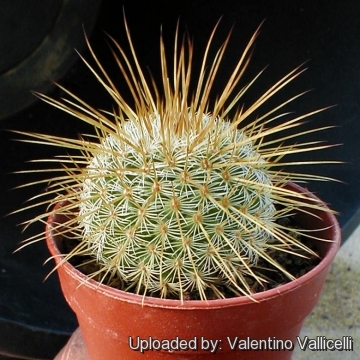 - FO251 (Collector: Felipe Otero) Locality: Los Cues, Oaxaca, Mexico Photo by: Valentino Vallicelli
- FO251 (Collector: Felipe Otero) Locality: Los Cues, Oaxaca, Mexico Photo by: Valentino Vallicelli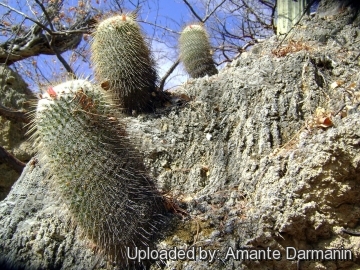 Mammillaria dixanthocentron, Near San Juan De Los Cues, Oaxaca Photo by: Amante Darmanin
Mammillaria dixanthocentron, Near San Juan De Los Cues, Oaxaca Photo by: Amante Darmanin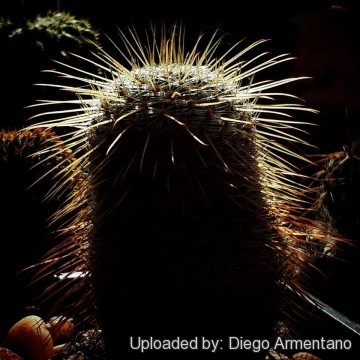 Mammillaria dixanthocentron Photo by: Diego Armentano
Mammillaria dixanthocentron Photo by: Diego Armentano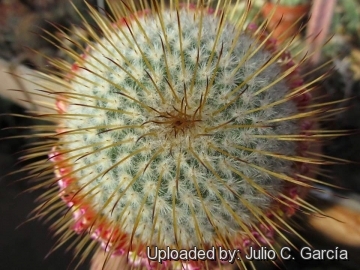 Mammillaria dixanthocentron Photo by: Julio C. García
Mammillaria dixanthocentron Photo by: Julio C. García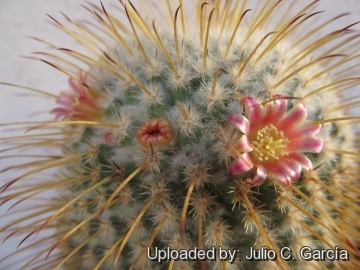 Mammillaria dixanthocentron Photo by: Julio C. García
Mammillaria dixanthocentron Photo by: Julio C. García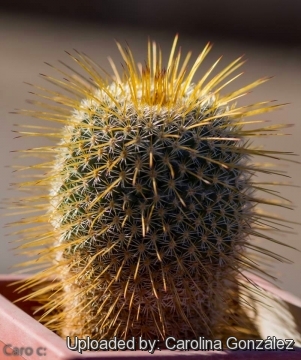 Mammillaria dixanthocentron Photo by: Carolina González
Mammillaria dixanthocentron Photo by: Carolina GonzálezCultivation and Propagation: Mammillaria dixanthocentronSN|19098]]SN|19098]] is not particularly difficult on own roots. No special cultural requirements.
Growth rate: It is an easily flowering species and a relatively rapid grower in comparison to other spherical species, the plant will increase the number of heads by dichotomous division. Large clumps can be produced in a few years given the best conditions.
Soils: It likes very porous standard neutral or slightly alkaline cactus mix soil.
Repotting: Use pot with good drainage.
Watering: It should be watered generously during the growing season, but do not overwater (Rot prone), keep dry in winter. Water it less than average if in bigger pots, small pots preferred.
Fertilization: Feed with a high potassium fertilizer in summer.
Hardiness: Reputedly sensitive to frost, but less so if kept on the dry side prior to, and during, cold weather. However warmth throughout the year will increase the grower's success (8-12°C during rest season).
Exposition: Outside bright, hot conditions or afternoon shade, inside it needs bright light, and some direct sun. Strong light encourages flowering and heavy wool and spine production.
Uses: It is an excellent plant for container growing. It always looks good and stays small.
Pests & diseases: It may be attractive to a variety of insects, but plants in good condition should be nearly pest-free, particularly if they are grown in a mineral potting-mix, with good exposure and ventilation. Nonetheless, there are several pests to watch for:
- Red spiders: Red spiders may be effectively rubbed up by watering the plants from above.
- Mealy bugs: Mealy bugs occasionally develop aerial into the new growth among the wool with disfiguring results, but the worst types develop underground on the roots and are invisible except by their effects.
- Scales: Scales are rarely a problem.
- Rot: Rot is only a minor problem with cacti if the plants are watered and “aired” correctly. If they are not, fungicides won't help all that much.
Propagation: Division, direct sow after last frost or (often) graft. Seeds germinate in 7-14 days at 21-27° C in spring, remove the glass cover gradually as the plants develops and keep ventilated, no full sun for young plants! To make a cutting twist off a branch and permit it to dry out a couple of weeks, lay it on the soil and insert the stem end partially into the soil. Try to keep the cutting upright so that the roots are able to grow downward.
Your Photos

by Carolina González



















